If you’re ready to witness architectural genius, here is a brief guide to the Gaudi buildings in Barcelona.
In every age, there is someone who redefines their field of work; someone whose vision is leaps and bounds ahead of everyone else; someone whose work and style are definitive and, ultimately, influential. Michelangelo, Botticelli, Shakespeare, Mozart, Picasso, Prince.
Catalan-born Antoni Gaudi is among them. When Gaudi was 18, he graduated from high school. The school’s headmaster remarked about the young Gaudi, “We awarded the diploma to a madman or a genius. Time will tell.”
Gaudi is often lumped in with the Art Nouveau movement of the early 20th century, but he really has a style all his own. He put his indelible stamp on Barcelona with a small handful of stop-you-in-your-tracks structures that are like nothing else.
Today a visitor to Barcelona can spend a couple of days traversing the city to marvel at the works of Antoni Gaudi. His marvelous masterpieces don’t just cause passersby to do a double-take. They stop you, jolt you out of a daydream, and take you captive.
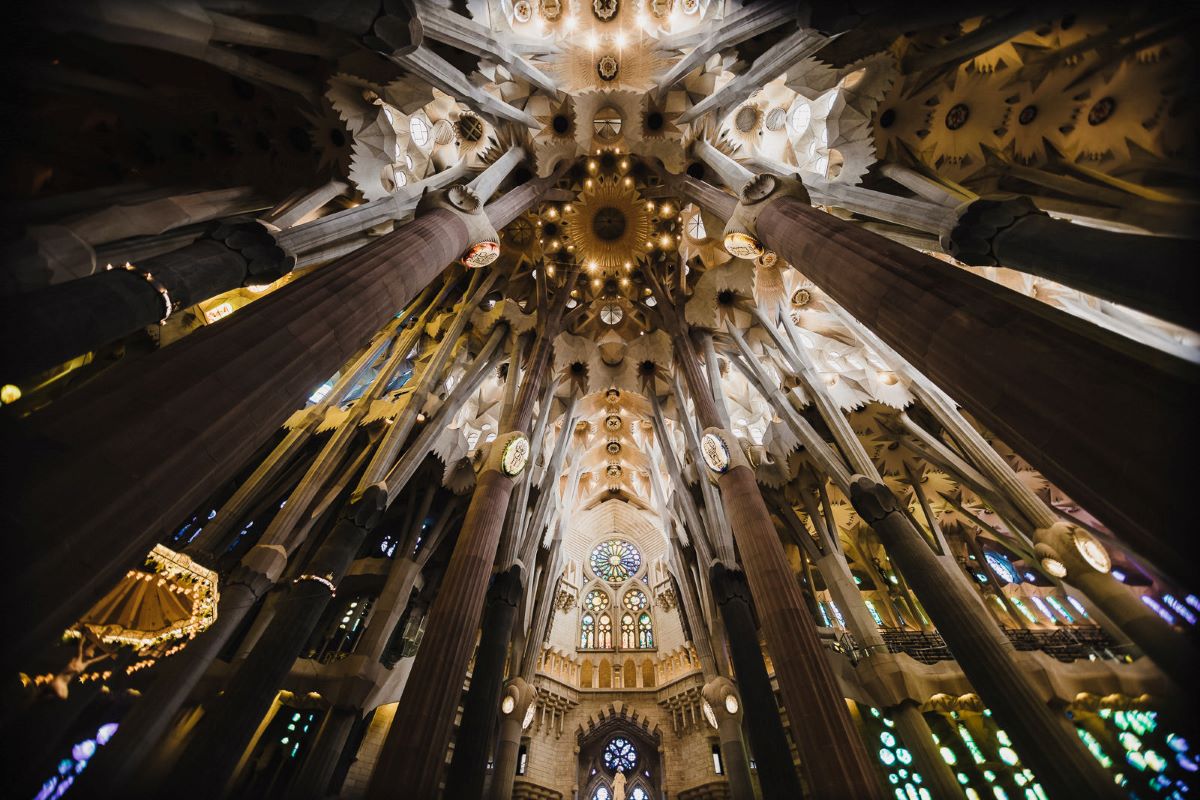
Traveler’s tip: And in the case you don’t have a couple of days to spend traversing the city, let us show you the best of Antoni Guadi in just one. Our Complete Gaudi Tour with Casa Batlló, Sagrada Familia, Casa Vicens or Casa Milà, and Park Guell is really the best, most efficient way to see all of these amazing sites in just one day.
6 Must-See Gaudi Buildings in Barcelona
Sagrada Familia
This structure is not only the most iconic of the Gaudi buildings in Barcelona, Sagrada Familia is one of the most recognizable in Europe. It’s also unfinished. Construction of the church began in 1882. When Guadi died in 1926, only a quarter of it was finished. In 2010, construction reached the halfway point. But it has been speeding up: it is currently estimated it will be finished in 2026. For those not keeping score, that’s 144 years in the making.
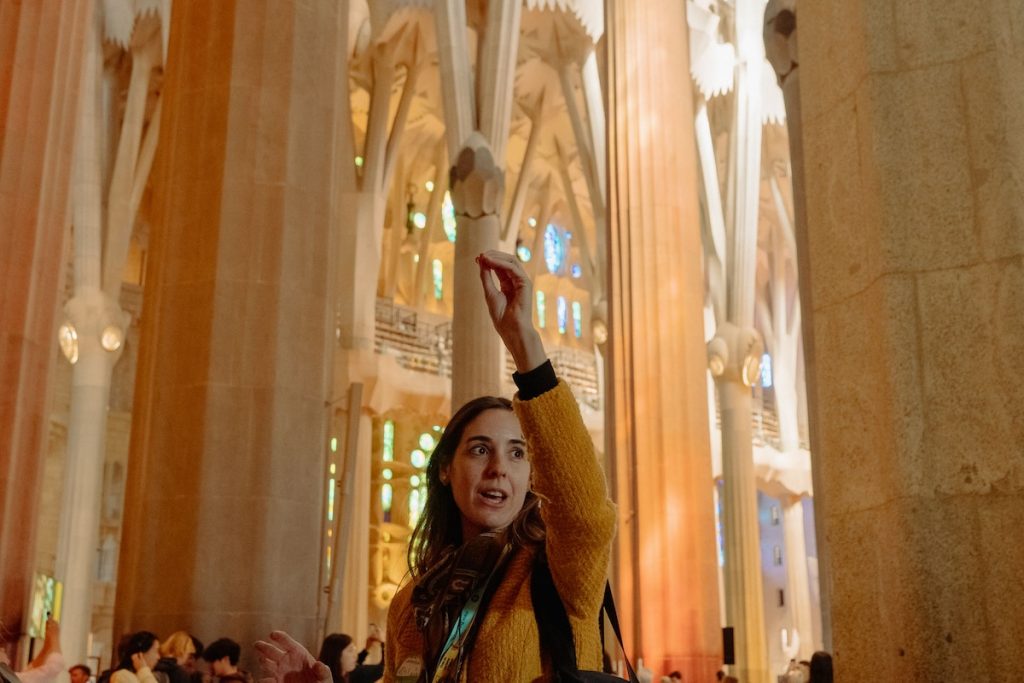
The architect was inspired by what he saw in nature. And this is evident once you stand inside the structure and look up. Pillars are like sturdy trees sprouting toward the heavens. As you may notice, there are very few straight lines and sharp angles in the design of the church. That’s because, as Gaudi put it, there are no straight lines and angles in nature, so there shouldn’t be in his work, either.
The church has 12 towers. The tallest one, in the very center of the church, represents Jesus. When it is finished, it will make La Sagrada Familia the tallest church in Europe at 560 feet. Sagrada Familia is the most visited monument in all of Spain.
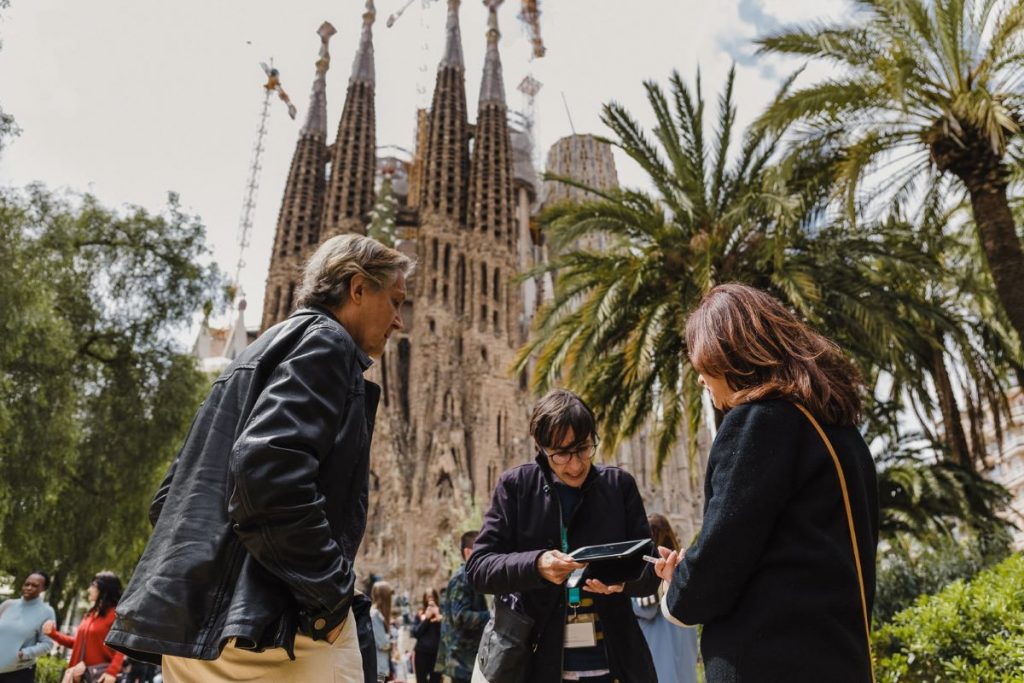
Park Güell
Built in the first decade and a half of the 20th century, Park Güell is a 45-acre expanse of green and bizarre mosaics overlooking Barcelona. The colorful terrace is the most picturesque part of the park, which not only has stunning views of the city, but has a mosaic-clad bench in the form of a giant snake. The park teems with iconography, everything from references to Catalan nationalism to religious symbols.
Originally, they envisioned the park as a residence for the city’s affluent set and the owner of the land, Palau Güell had intended to build and sell residences on the site. They constructed only two of the dozen or so and today you can still marvel at the Gaudi-designed structures in the park.
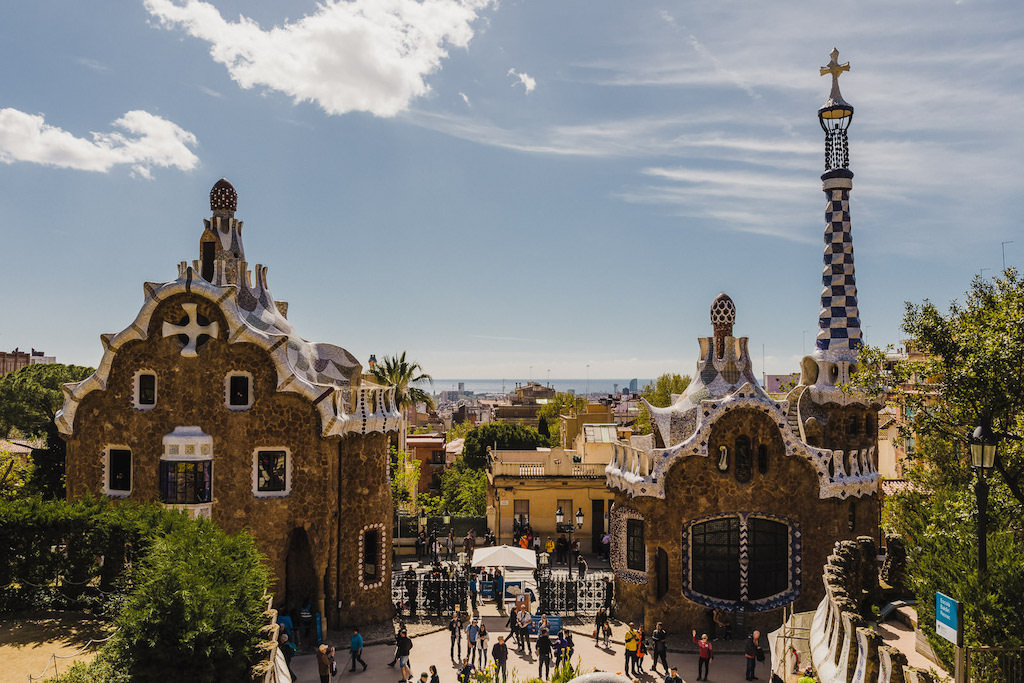
La Pedrera (Casa Milà)
The apartment building formerly known as Casa Milà is a Gaudi masterpiece. Located in L’Eixample, the building’s undulating, curving facade evokes a seaside cliff, characteristic of Gaudi philosophy that architecture is best when it references the natural world. The 33 wavy, wrought-iron balconies further elucidate the emphasis on nature.
The businessman who commissioned Gaudi to design the building was Pere Milà and he had married into a fortune. Milà was one of the first people in Barcelona to own an automobile, so Gaudi designed the building with an inside parking space, a first for the architect.
Visitors are welcome at La Pedrera. There are a variety of tours you can take, including visits at night and at sunset.
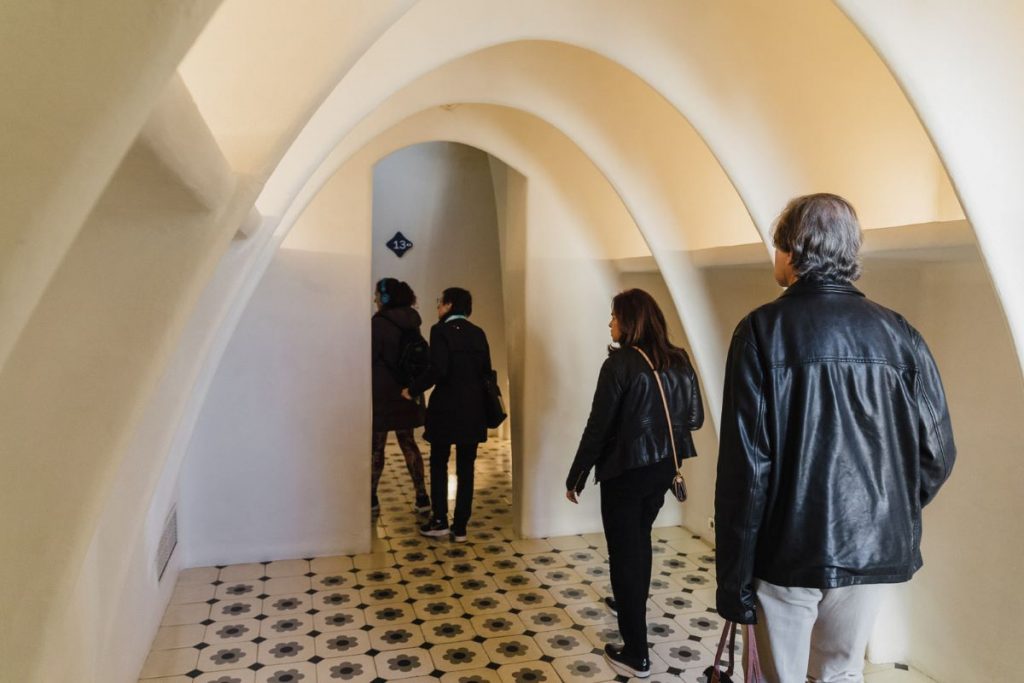
Casa Batlló
Built in the first decade of the 20th century, Casa Batlló looks looks like it just landed from some kind of fairy tale dimension Some locals have nicknamed the Eixample apartment building as Casa del Drac, house of the dragon, and Casa del Ossos, house of bones. Once you stop and marvel at this building, you’ll understand why. Dreamy waves, vaguely gothic-looking arches, and convex walls and windows characterize the facade and exterior. The roof has twisted tiled chimneys, a chief element of Gaudi’s style. The building is simply the pinnacle of Gaudi’s creative universe.
There are different types of tours available, including a morning tour when the building is mostly devoid of other visitors.
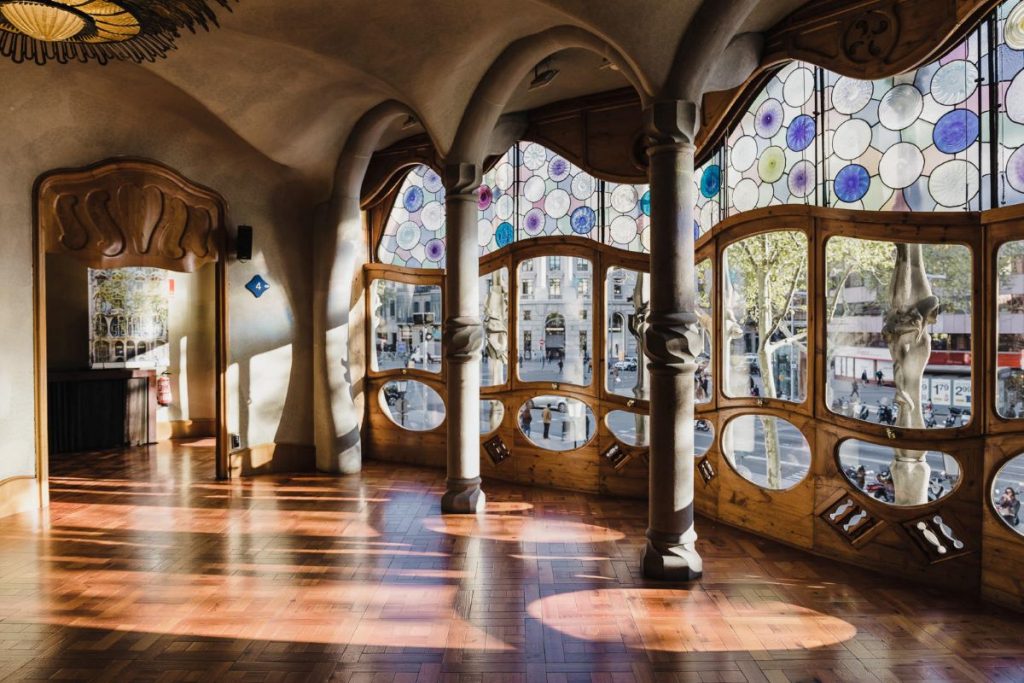
Casa Vicens
When you first lay eyes on Casa Vicens, it would be understandable if you rubbed your eyes or squinted, thinking that the building is out of focus or pixilated or even made out of legos. The brightly colorful building with jagged balconies was the first of the Gaudi buildings in Barcelona. The young architect was just 30 years old when he began the three-year project. Today it is one of his lesser-visited buildings and it only opened to the public in 2017.
If you’ve already become accustomed to the undulating waves and curves of La Perdrera and Casa Batllo, for example, you might not recognize the Gaudi style right away at Casa Vicens. The building is a bit more geometric, symmetrical, and has—gasp—some actual straight lines.
There are various tours you can take of Casa Vicens, including an intriguing 90-minute, small-group olfactory tour.
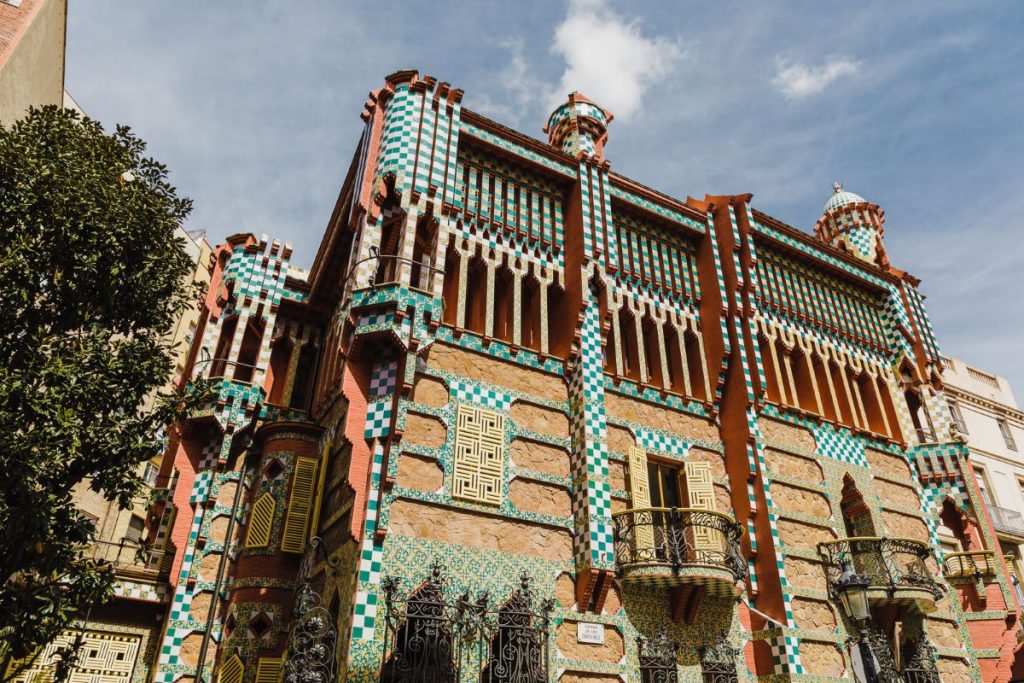
Casa Calvet
Located in Eixample, Casa Calvet is one of the most conventional of the Gaudi buildings in Barcelona. It might not overwhelm you like some of his other buildings, but if you’re doing a tour in the neighborhood, it’s worth passing by this one. They erected the building in 1899 and a year later the Barcelona City Council awarded it “building of the year”. The stone facade is broken up by wrought-iron balconies, a typical Gaudi feature. It’s worth seeing Casa Calvet just to put the architects evolving style into perspective.
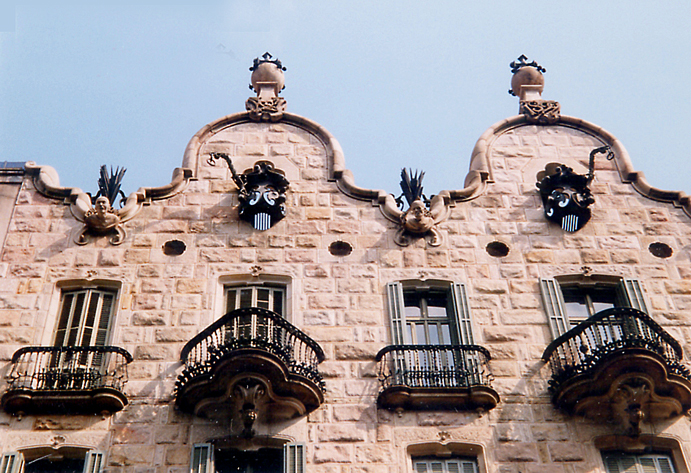
Discover Gaudí with Take Walks
Embark on the Complete Gaudí Tour in Barcelona to immerse yourself in the visionary world of Antoni Gaudí. This comprehensive 5.5-hour experience, led by expert guides, offers pre- reserved access to some of Gaudí’s most iconic creations. Depending on your chosen time, you’ll explore either the whimsical interiors of Casa Batlló in the morning or the vibrant Casa Vicens in the afternoon, both showcasing Gaudí’s unique architectural flair. The tour continues with a guided visit to the enchanting Park Güell, renowned for its colorful mosaics and organic designs. Conclude your journey at the awe-inspiring Sagrada Família, where you’ll delve into the intricate symbolism and innovative structures of this monumental basilica. Along the way, you’ll also pass by other notable Modernist landmarks, including Casa Milà (La Pedrera), Casa Amatller, and Casa Lleó i Morera, enriching your understanding of Barcelona’s architectural heritage.
Are you ready to see it all? Check out the Complete Gaudí Tour
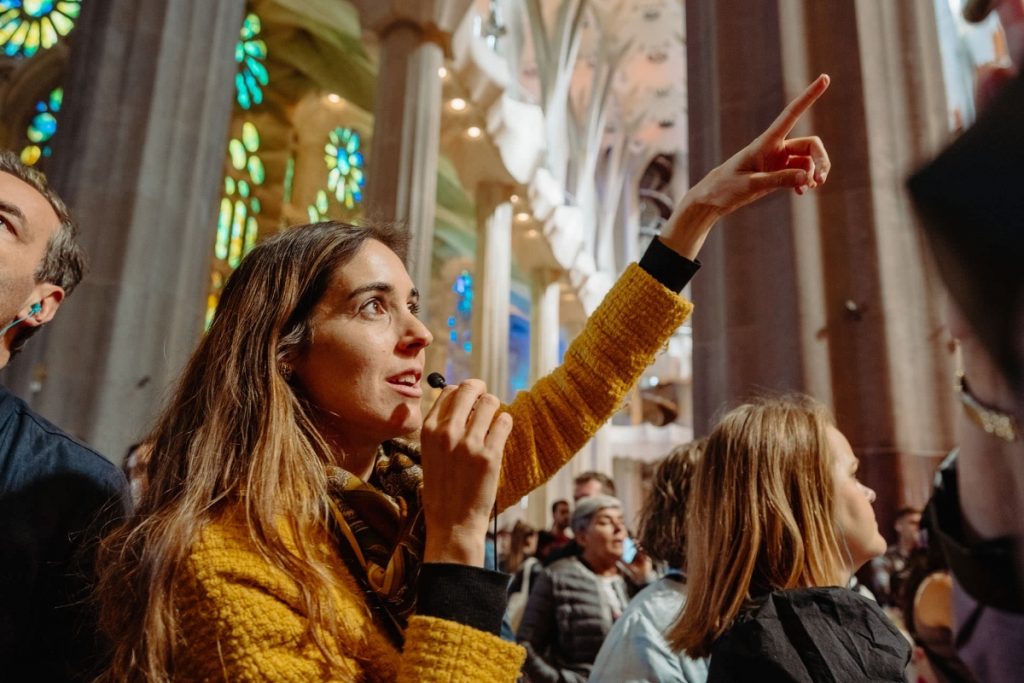
FAQ- Gaudí Architecture
What is the best way to see Gaudí’s architectural masterpieces in one day?
The Complete Gaudí Tour is the most efficient way to explore Antonio Gaudí’s most iconic works in a single day. It includes visits to Casa Batlló or Casa Vicens, Park Güell, La Sagrada Familia, and a walk past other notable landmarks like Casa Milà.
Why is La Sagrada Familia so famous?
La Sagrada Familia is Gaudí’s magnum opus and one of Europe’s most recognizable landmarks. Under construction since 1882, it’s renowned for its symbolic design, organic architecture inspired by nature, and plans to become the tallest church in Europe once completed.
What makes Gaudí’s style unique?
Though often linked to Art Nouveau, Gaudí developed his own visionary style inspired by nature, avoiding straight lines and embracing curves, mosaics, and organic forms. His buildings are imaginative, symbolic, and completely distinct from traditional architecture.
Update notice: May 27, 2025.
Experience Gaudí’s masterpieces with a local expert on our Complete Gaudí Tour. You’ll explore Casa Batlló or Casa Vicens without the crowds, as well as see Casa Milà, Park Güell, and La Sagrada Familia.
